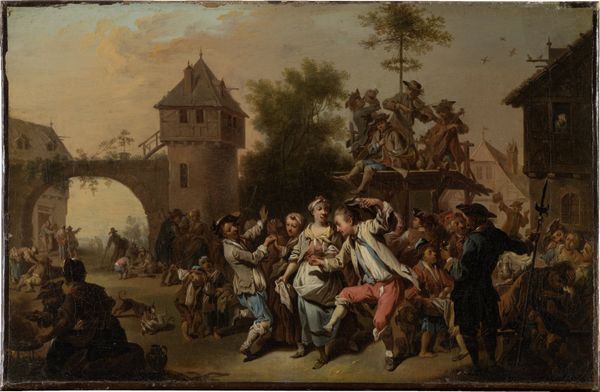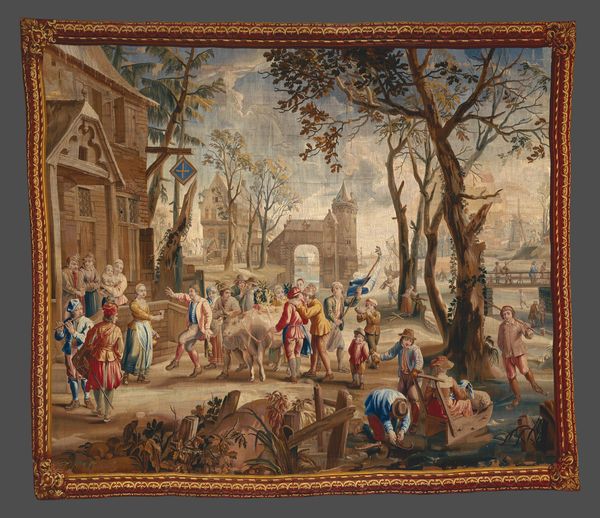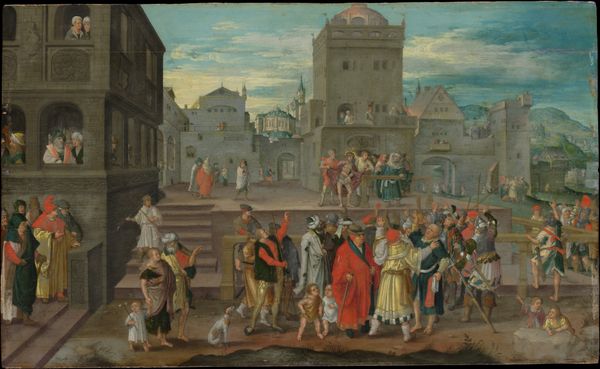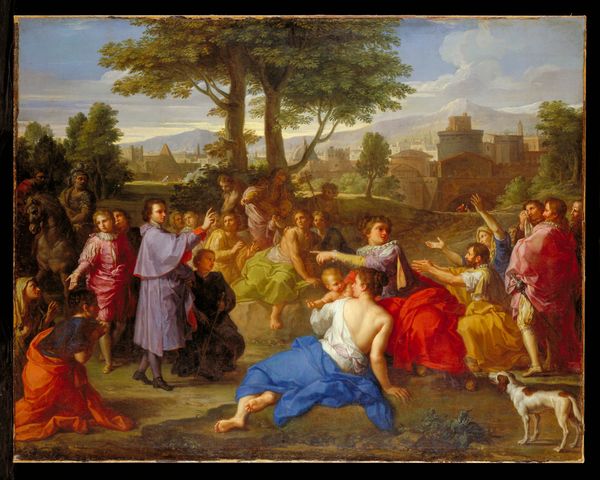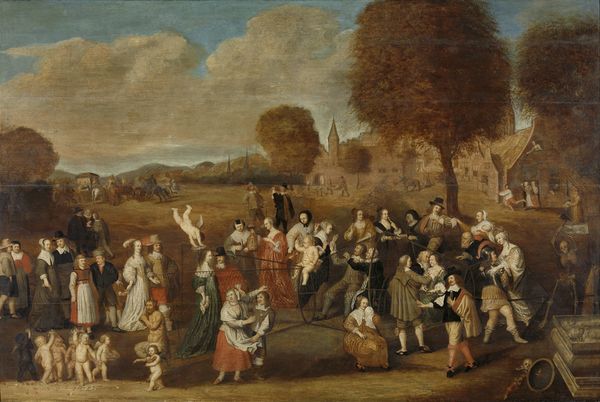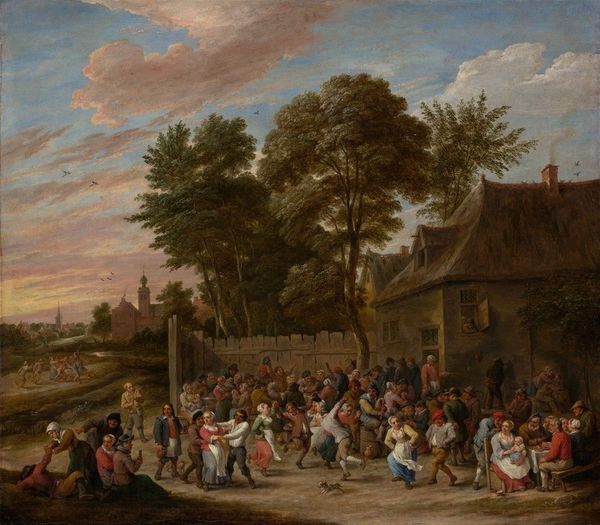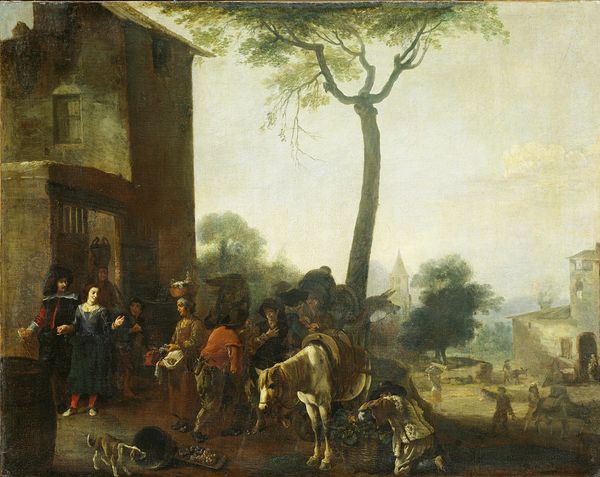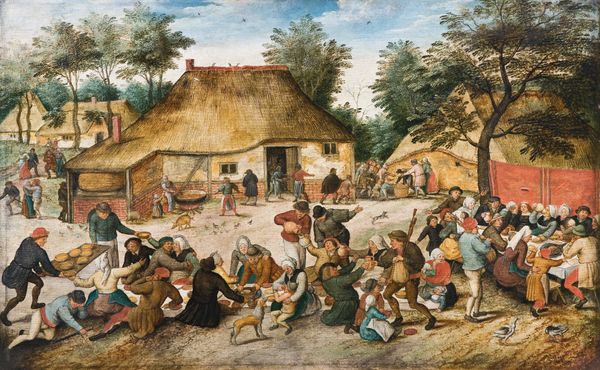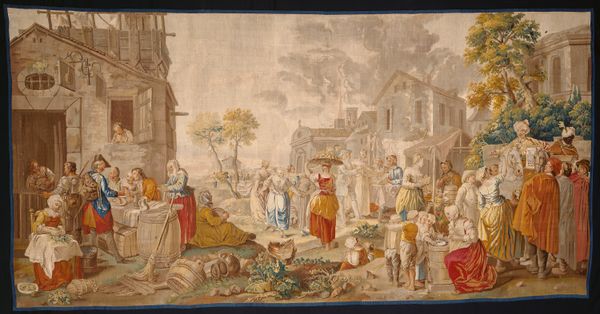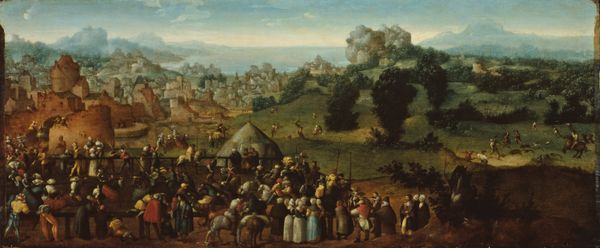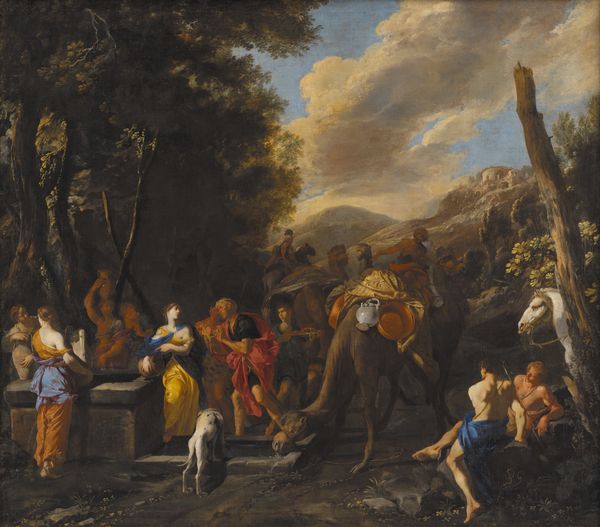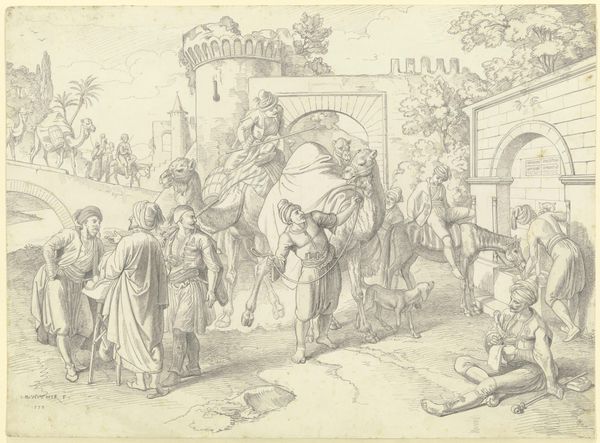
Verlosung eines Hammels in der Umgebung von Frankfurt am Main (Kirchweihszene) 1802
0:00
0:00
drawing, gouache, plein-air
#
gouache
#
drawing
#
gouache
#
plein-air
#
landscape
#
romanticism
#
genre-painting
#
watercolor
Copyright: Public Domain
Editor: Here we have Anton Radl’s "Verlosung eines Hammels in der Umgebung von Frankfurt am Main (Kirchweihszene)", or "Raffle of a Ram near Frankfurt am Main (Fair Scene)," a gouache drawing from 1802. It feels like such a vivid snapshot of a community gathering. What stands out to you when you look at this piece? Curator: Well, placing this work within its socio-historical context is key. Radl’s depiction of this raffle, a very public event, reveals the importance of community bonding in early 19th-century rural life. But look closer; what kind of social commentary might Radl be making, or subtly reinforcing, in his selection of subjects and depiction of their roles? Editor: Hmm, I see people of different ages, but they all seem to be engaged in this shared activity, like winning the ram is important. Are you suggesting that it is documenting how rural communities bond together and what their activities are like? Curator: Precisely. Think about the function of the artwork itself. Who was Radl painting for? How might the elite classes who were probably the main audience of such pieces perceive this scene of "common" life? Is it romanticized? Critical? Or simply observational? These images helped shape, and perhaps solidify, class differences and stereotypes. Consider, for example, the attire of the individuals. What does it suggest about the social status of each? Editor: I never thought about it that way, about the painting’s audience affecting how we see the community activities in the drawing itself! It’s fascinating to think of art playing a role in reinforcing class differences through what it chooses to depict and how it does it. Curator: Exactly! Radl’s work isn’t just a charming genre scene. It's also a document contributing to how social classes were defined and perceived through visual representation. Seeing art in its historical and cultural moment really enriches its meaning, doesn’t it? Editor: Definitely! I’ll never look at a seemingly simple genre painting the same way again. Thanks!
Comments
No comments
Be the first to comment and join the conversation on the ultimate creative platform.
